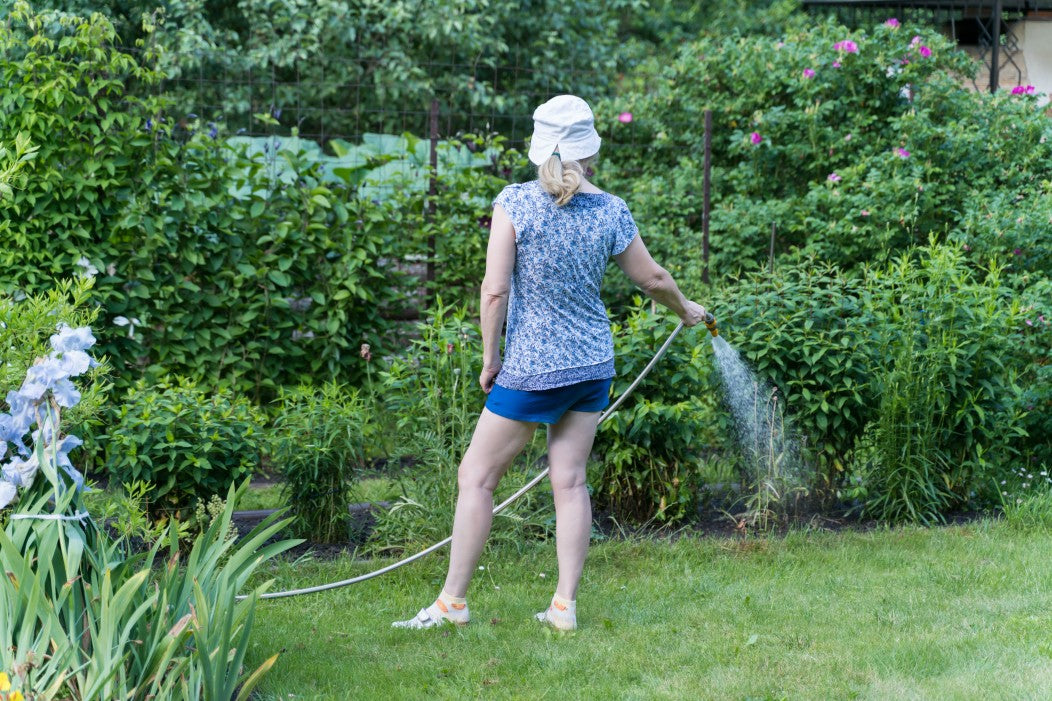Is your bahiagrass looking bleak? You don’t want to be caught with dead, patchy grass this summer when you have the tools to make your grass green and healthy right at your fingertips. Lawn care is the name of the game to achieve optimal and lush grass. You might feel like you’re doing enough, but there are always ways to improve your grass care, and it starts with learning.
What Is Bahiagrass?

Paspalum notatum, or bahiagrass, is a tropical warm-season grass common in many southern and coastal states, first introduced as a pasture grass. For optimal growth, this grass should be seeded or sodded in a location with a consistent temperature of 80-95 degrees Fahrenheit.
This grass has a coarse texture, making it ideal for homes with full-sun exposed lawns. Having a deep and extensive root system, this grass requires little watering as it can keep hydrated through its deep and extensive root system. As you can see, there are already major reasons why this grass is suitable and more manageable for those living in hotter and drier areas. If you have little irrigation on your lawn, consider bahiagrass for your home.
Proper lawn care starts with learning and adapting to your grass type. Whether you need sod or seed, Simple Lawn Solutions has the supplies you need for adequate grass care.
How to Care for My Bahiagrass

Caring for bahiagrass, or any warm-season grass is much different than you might think.
When caring for your bahiagrass, there are two important things to take into account for your lawn care: maintenance and pest management. Maintenance for any turf includes mowing, watering, and fertilization - there are specific grass care techniques for common bahiagrass.
Because of the nature of bahiagrass, it is critical not to overwater your lawn. This grass should be watered only on an as-needed basis. Here are some ways to tell if it may be time to change your watering routine:
- Low-to-no growth
- Brown patches
- Change in season
- Too little or too much rain
You will be watering more frequently to establish roots if you are growing bahiagrass from a seedling. Regardless of what type of grass you have, we want you to be well-equipped and know what to do when it comes to watering your lawn.
Bahiagrass fertilization should be done twice a year, in spring and summer, whereas cool-season grass is best fertilized in the fall.
If you’re not sure what type of fertilizer your lawn needs, consider doing a soil test and check out our variety of fertilizers available for your grass care needs. This test will help you determine what your soil is lacking.
Do not stop mowing once summer is over - keep mowing as long as the grass grows and continue until the grass enters dormancy. Following this rule for warm-season grass can mean mowing will continue through the fall months, and may sometimes be year-round.
Not all grass is created equal - it’s essential to pay attention to how your grass is responding to sunlight, watering, and fertilization.
There are more tips and tricks for healthy lawn care for your bahiagrass.
What Can I Do to Protect My Lawn?
The best thing you can do for your grass is to set up a lawn care routine. We’ve mentioned lawn maintenance for mowing, watering, and fertilizing your bahiagrass, another way to care for your grass is proper lawn aeration. Consider adding aeration into your grass care so you can achieve and maintain your healthiest and happiest lawn yet.
Other Types of Warm-Season Grasses

There are so many different species of grass and so much to learn about each one. You’ve passed bahia 101, but there is always more to learn about your warm-season lawn. Including bahia, there are several types of warm-season grass:
- Bermuda - Known as the “sports turf of the South”
- Centipede - Weed-like and low maintenance
- St. Augustine - Most prevalent in the southeastern United States
- Zoysia - Can also thrive in cooler weather.
Looking at these warm-season grass types, you may think that their care would be the same. Although it might seem like that on the surface level, each lawn will need individual attention depending on soil, nutrients, and other factors.
Putting your lawn care first will ensure you are doing your best at creating your backyard oasis.










